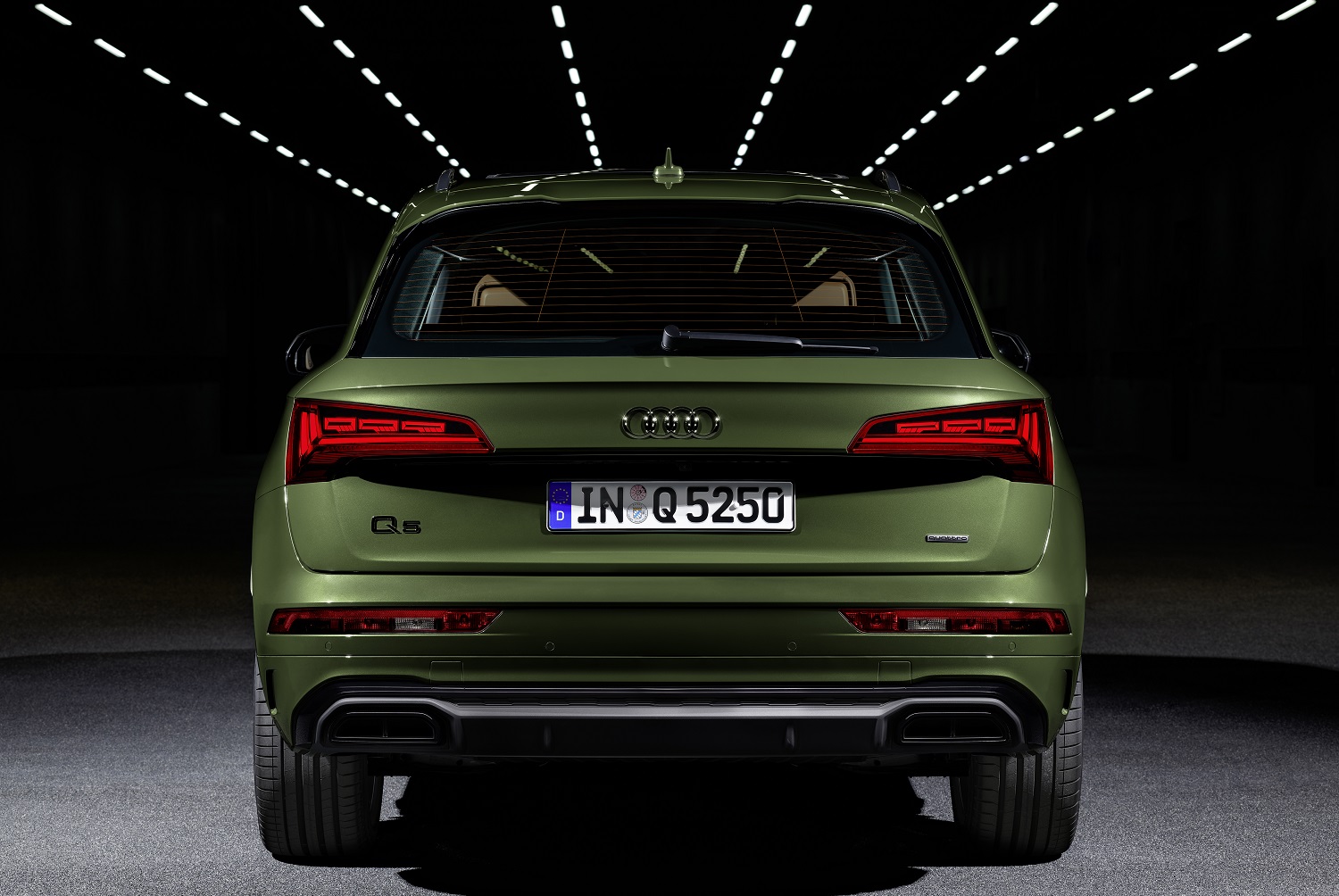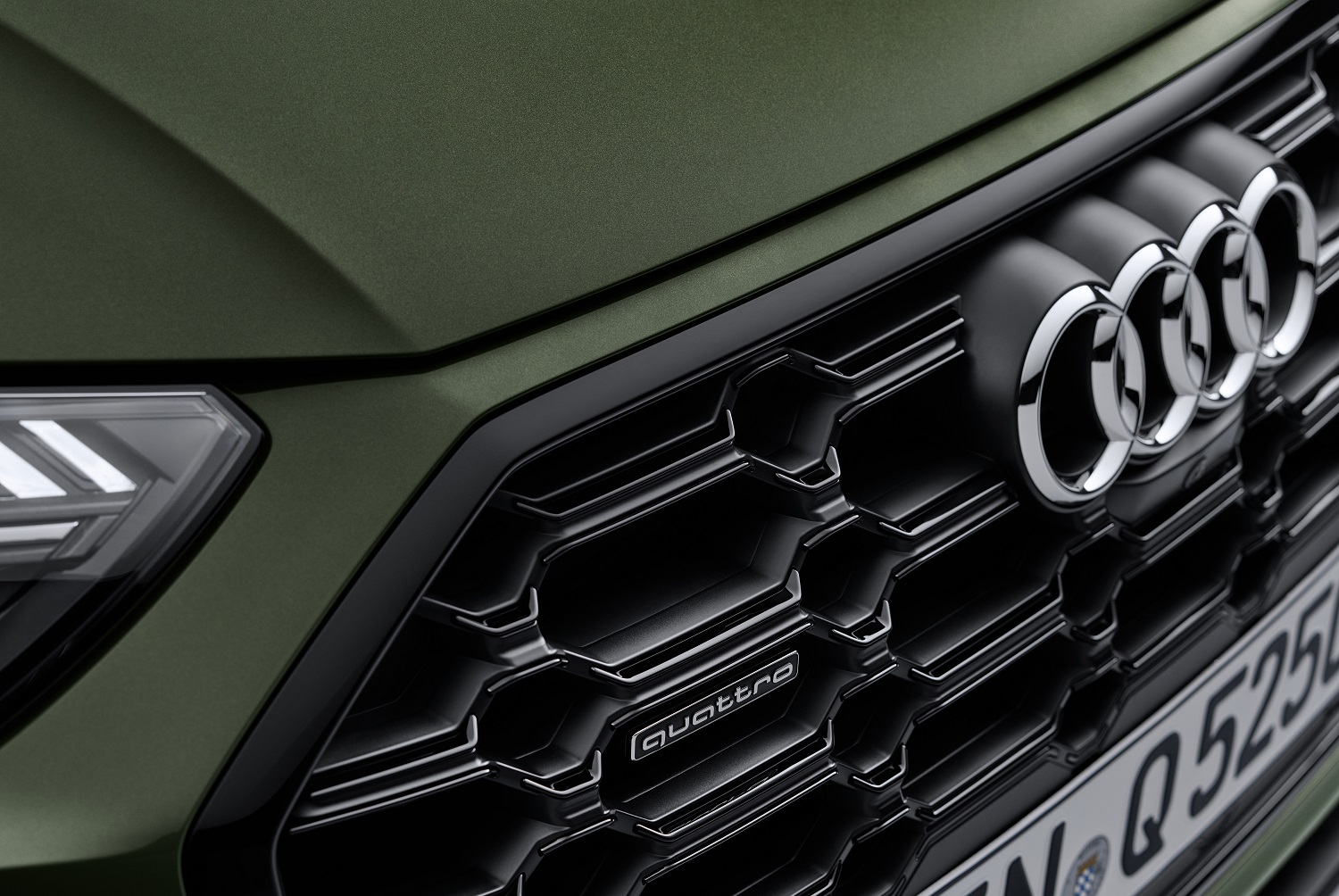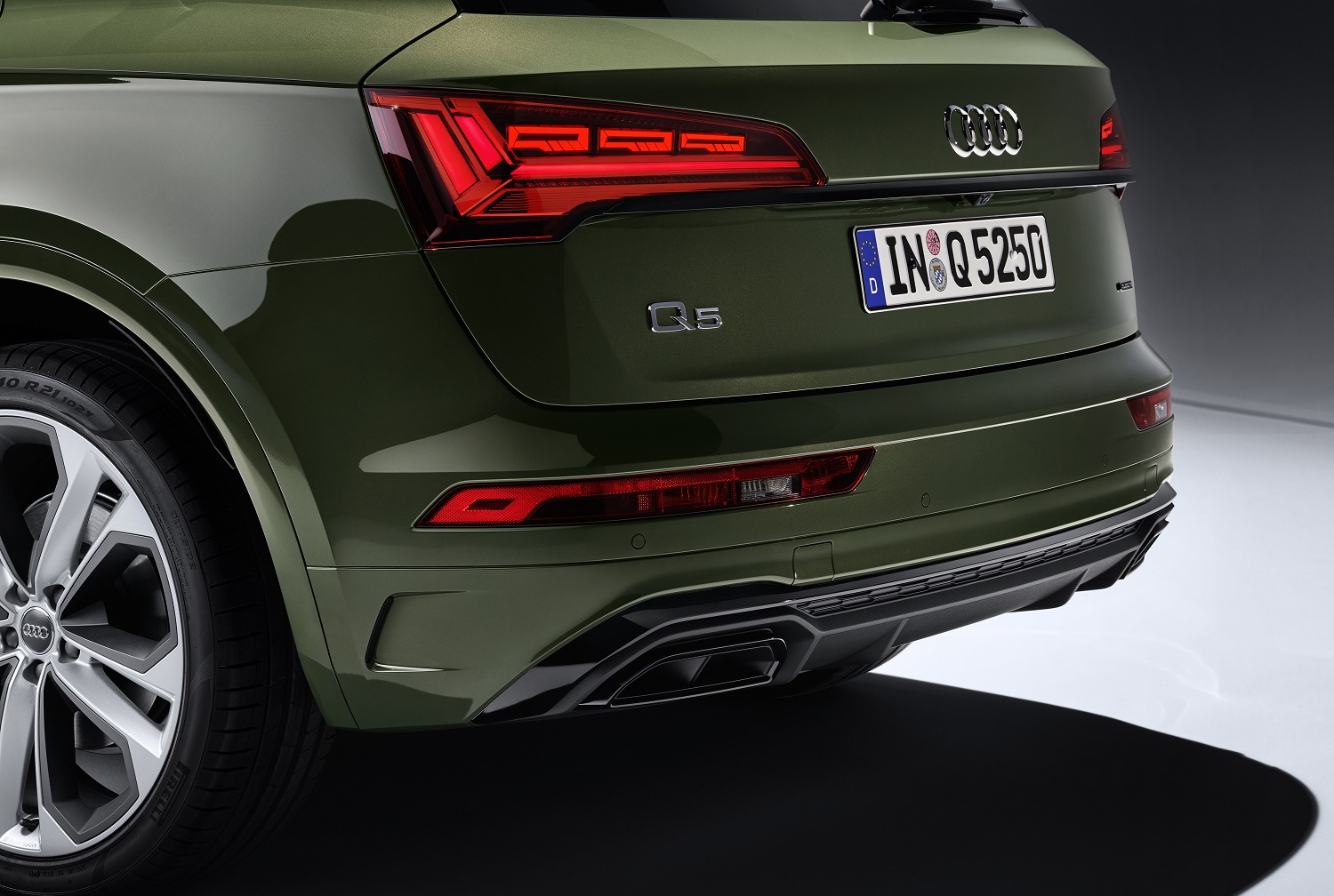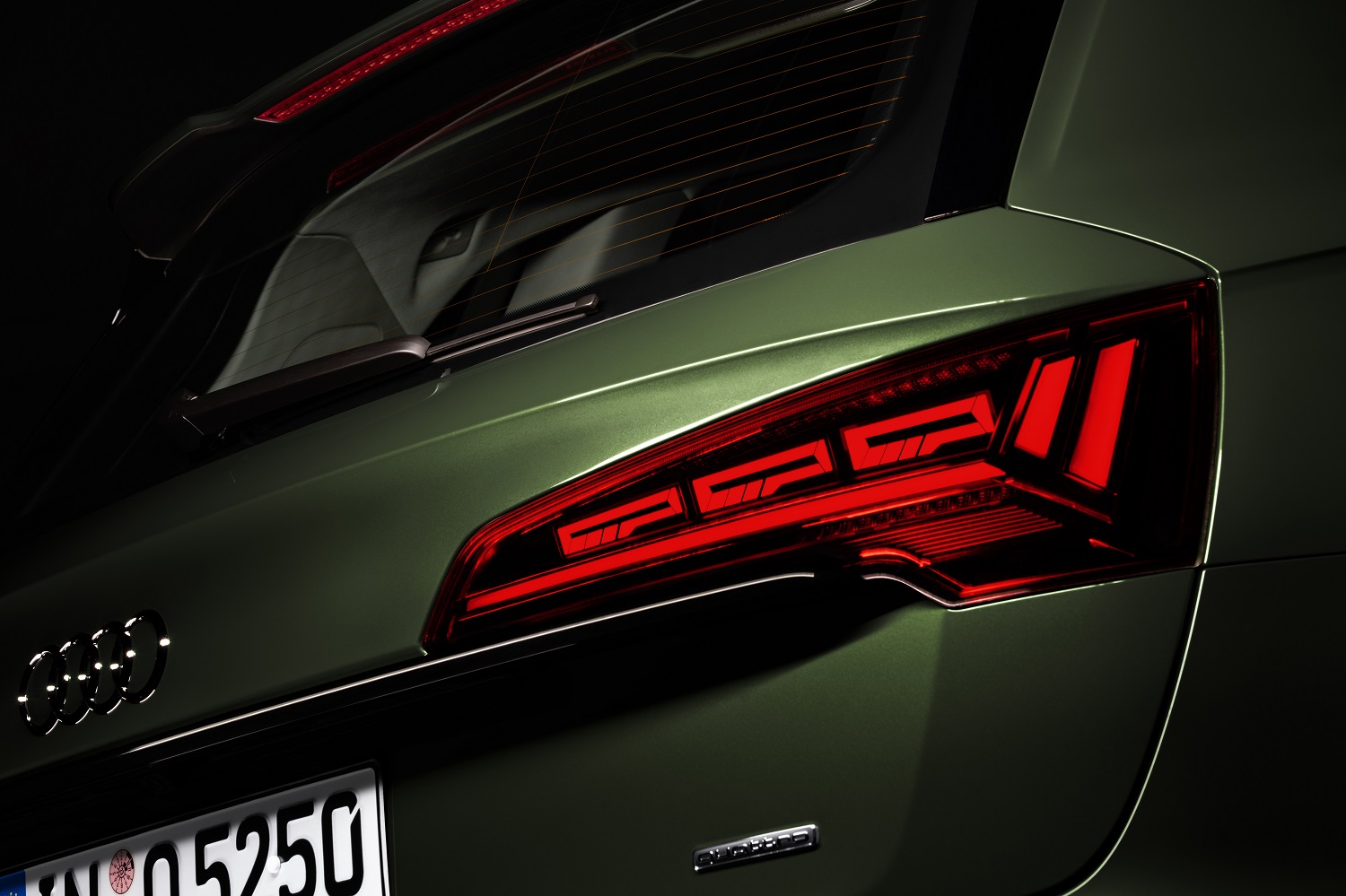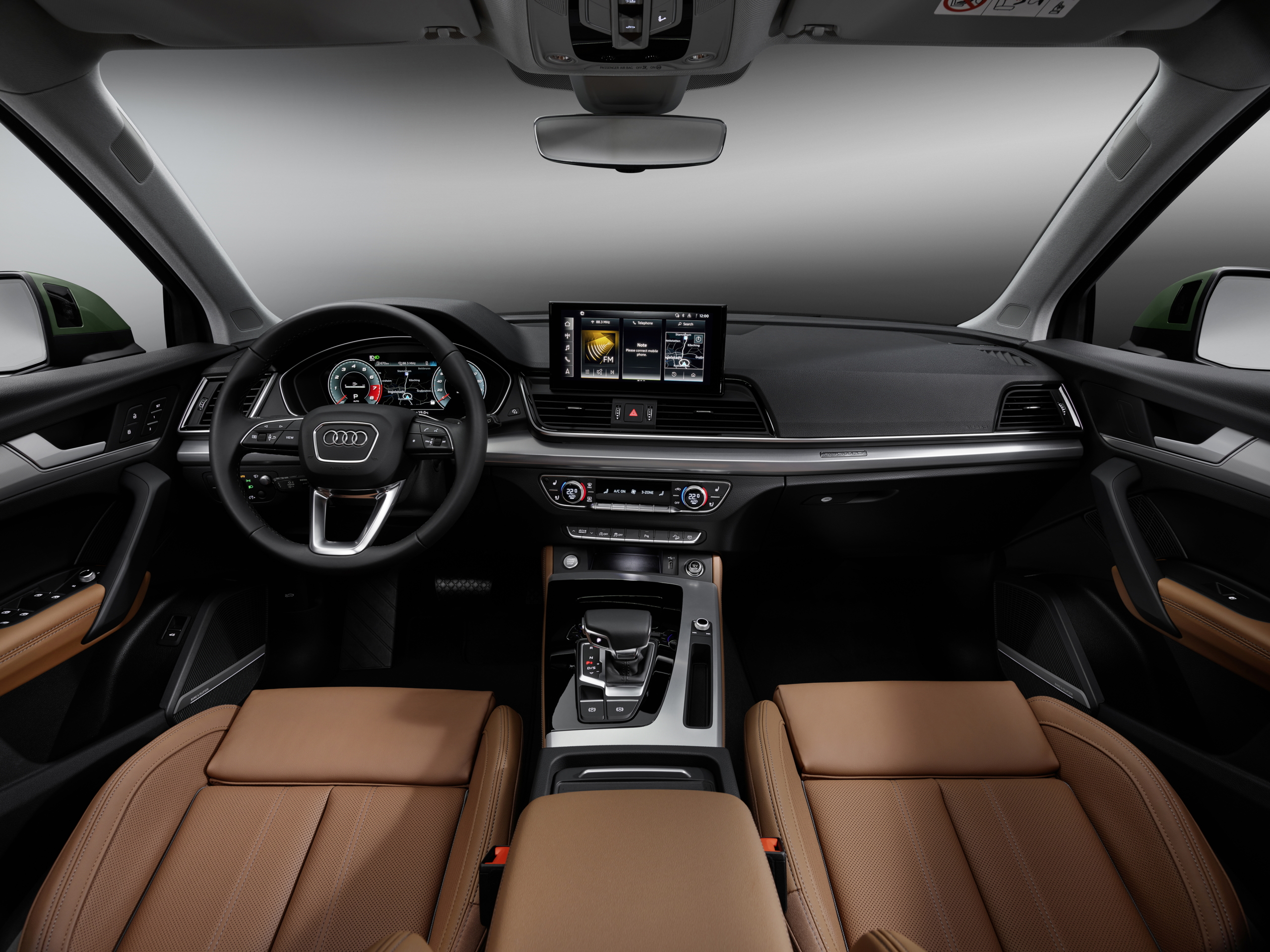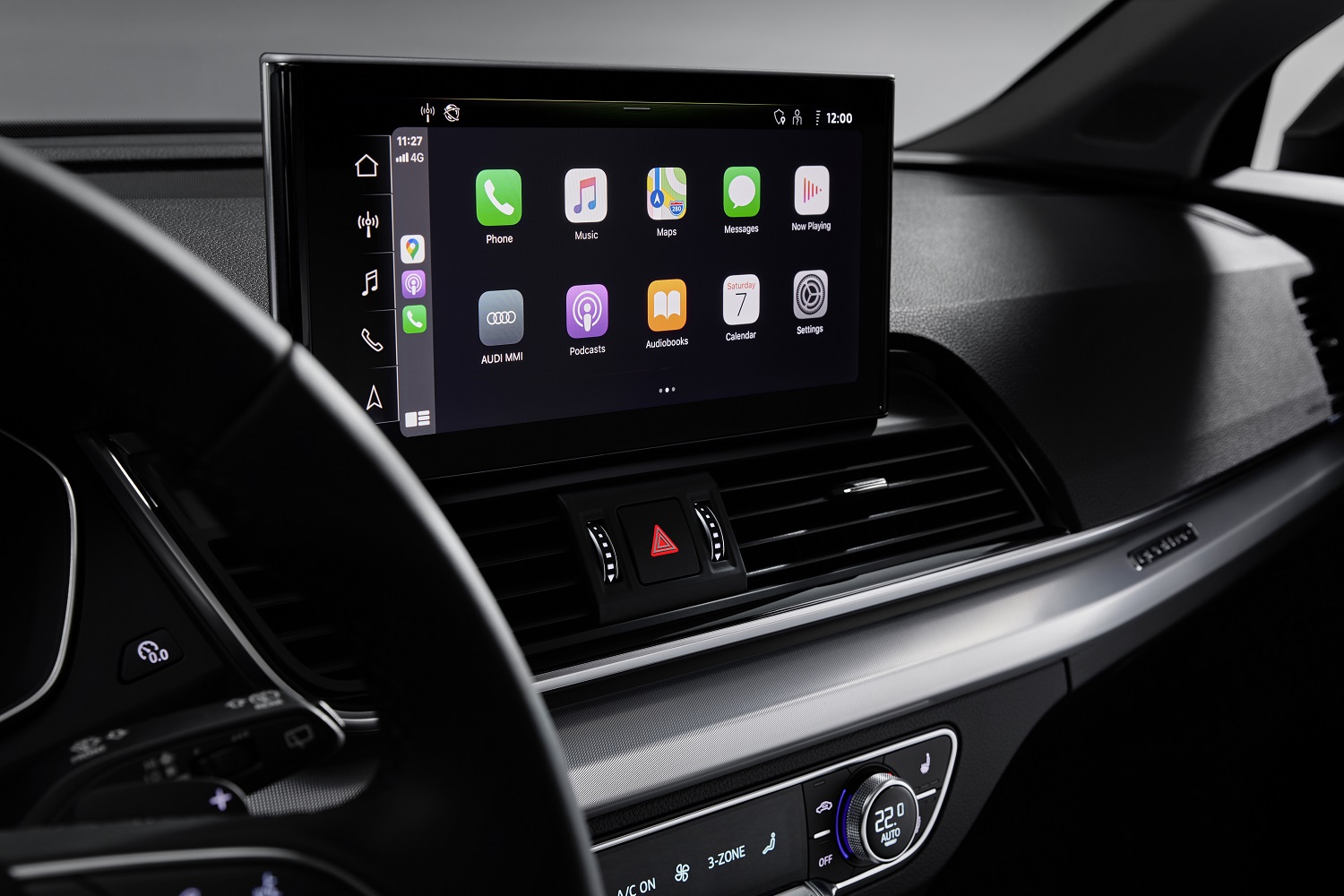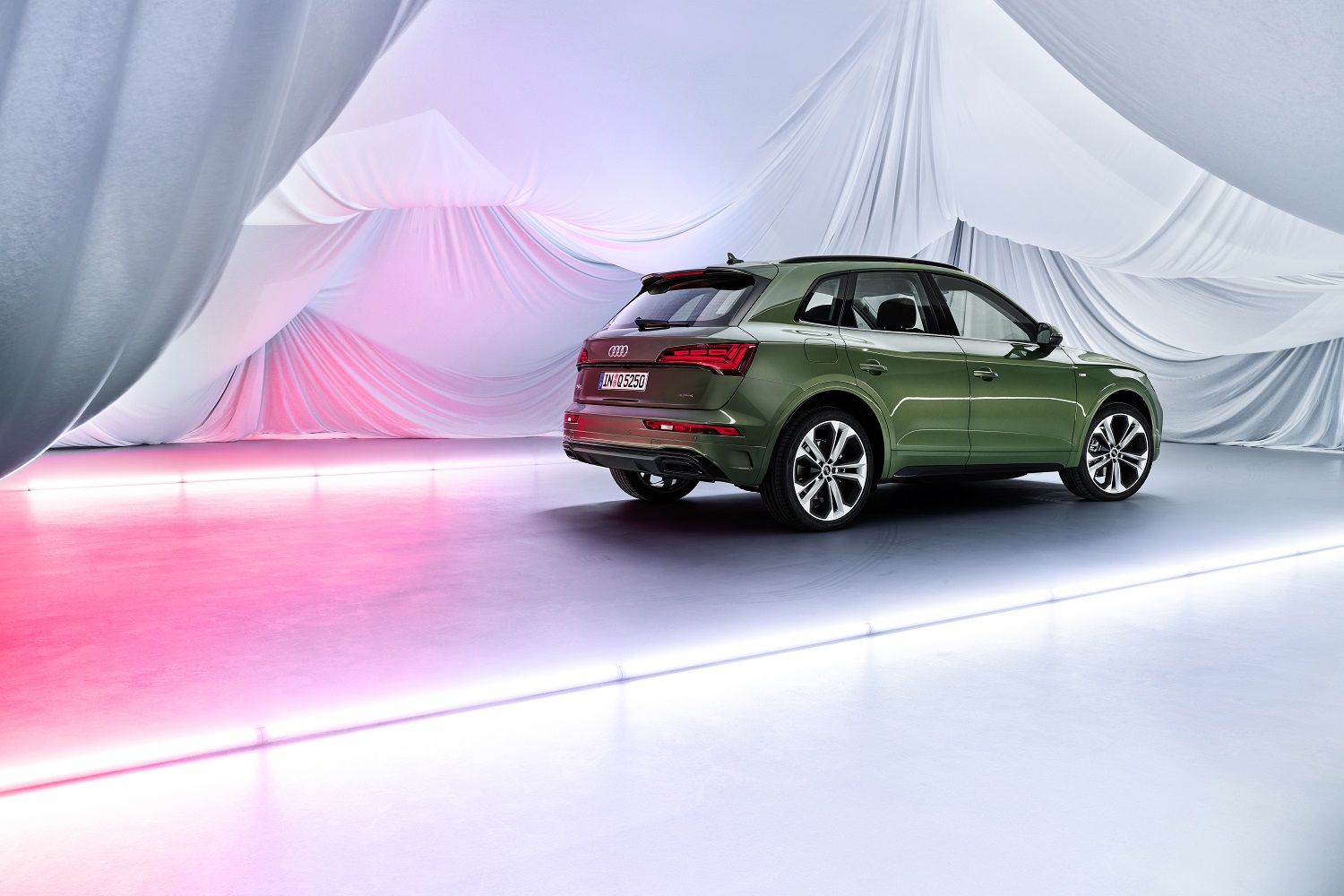Audi is focusing on expanding its range of electric vehicles, but it’s not forgetting about the gasoline-powered models in its portfolio. It updated the Q5, its best-selling vehicle in the United States, by giving it a new-look design that includes OLED rear lights, fitting a better infotainment system, and giving the entry-level model a power boost.
Up front, subtle visual changes distinguish the 2021 Q5 from the outgoing model. It wears a grille that’s thinner and wider plus a new-look bumper. Stylists gave the rear end a nip-and-tuck, too, and some versions of the SQ5 receive OLED tail lights split into three six-segment tiles. OLED technology is normally associated with televisions, computer monitors, smartphone screens, and other digital devices, but offering it in a car makes sense.
“In addition to perfect contrast, the benefits of digital OLED are a high level of homogeneity and minimal gap between the segments. Looking to the future, OLED is the perfect technology for executing personalized light design with a high degree of precision and extensive variability. This technology offers all sorts of opportunities for further development,” said Stephan Berlitz, Audi’s head of development for light innovation.
Audi’s new MIB 3 infotainment system is displayed on a bigger, 10.1-inch touchscreen installed on top of the dashboard. It packs a redesigned processor that offers 10 times more computing power than before, so the system responds to input more quickly. The outgoing Q5’s rotary controller was sent back to the parts bin, and interior designers carved out an additional storage bin in its place. That means the Q5 follows the rest of the Audi range’s shift towards touch-only controls, but voice recognition is available for those who’d rather not poke a screen.
Wireless Apple CarPlay and an integrated toll module come standard, and every Q5 offers lane departure warning, parking sensors on both ends, plus Audi side assist with pre-sense rear. Upmarket trim levels are available with a digital, driver-configurable instrument cluster called Digital Cockpit in Audi-speak and a 360-degree camera.
Q5 buyers have three powertrains to choose from. The entry-level model packs a 2.0-liter, four-cylinder that’s turbocharged to 261 horsepower (13 more than before) and 273 pound-feet of torque. The TFSI E variant also receives a 2.0-liter turbo four, but it gains an electric motor sandwiched between the engine and the seven-speed automatic transmission. The system’s total output checks in at 362 hp. I drove it in 2020, and I was impressed by its acceleration, its useful technology, and the smooth, quiet driving experience delivered by the hybrid system.
Audi pegs the TFSI E’s zero-to-60-mph time at 5.1 seconds. Motorists who want even quicker acceleration can select the range-topping SQ5, which swaps the four-cylinder for a 3.0-liter V6 rated at 349 hp and 369 lb-ft. of torque. It hits 60 mph from a stop in 4.7 seconds, a 0.4-second improvement over the 2020 model. Quattro all-wheel drive comes standard regardless of how many cylinders are under the hood.
Due out across the United States in the fourth quarter of 2020, the 2021 Audi Q5 carries a base price of $43,300 before options and the mandatory destination charge are added to the bottom line. Next up in the hierarchy is the plug-in hybrid model, which is priced at $51,900, followed by the SQ5 with a $52,900 price tag.
Editors' Recommendations
- Audi Q6 e-tron ushers in the automaker’s next EV phase
- Audi’s Q4 Sportback E-Tron will have customizable LED headlamps, 279-mile range
- The 2020 Audi A5 gets some style tweaks and a new infotainment system
- 2020 Audi Q7 gets a face-lift, updated infotainment system, mild-hybrid tech




